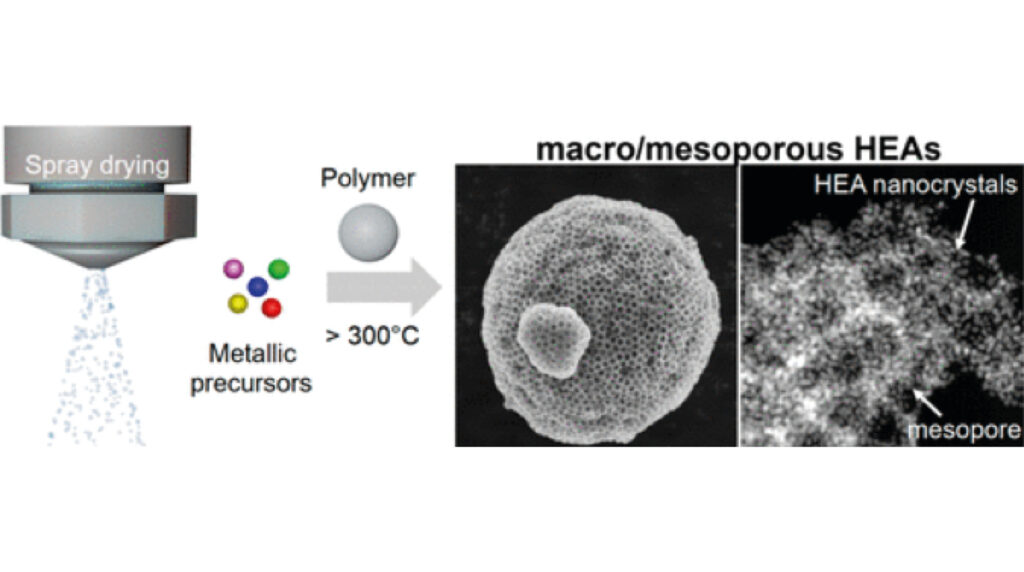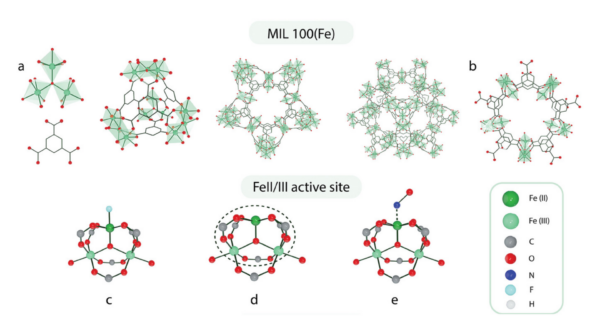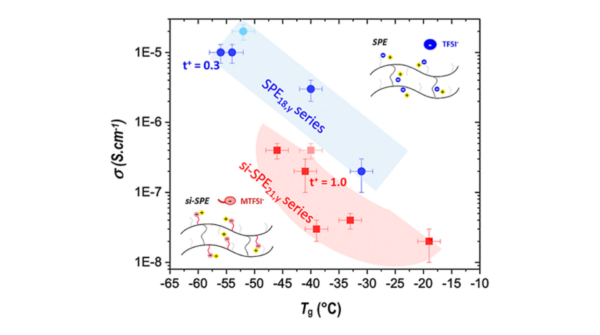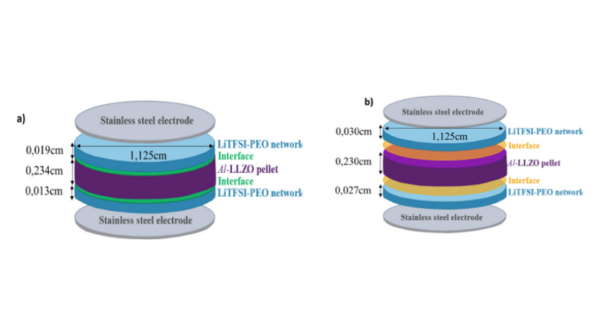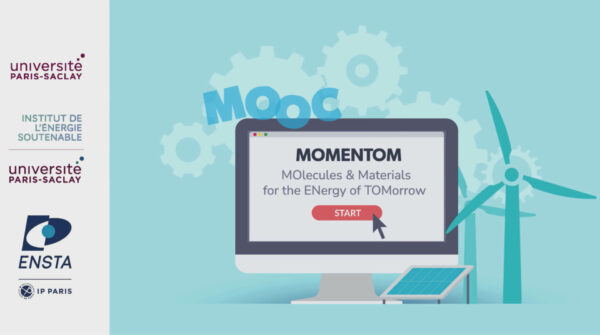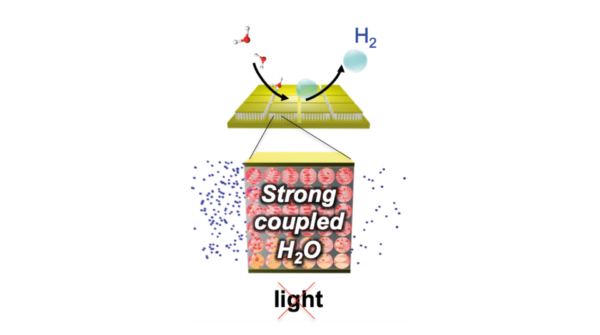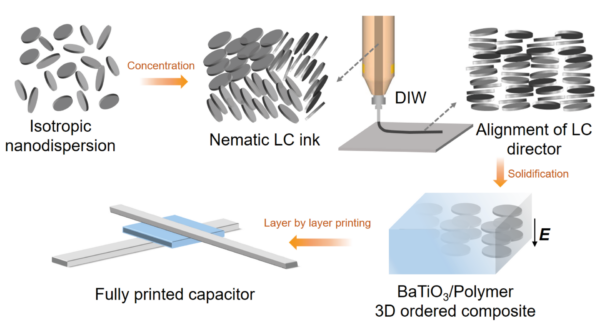High-Entropy-Alloy Nanocrystal Based Macro- and Mesoporous Materials
High-entropy-alloy (HEA) nanoparticles are attractive for several applications in catalysis and energy. Great efforts are currently devoted to establish composition–property relationships to improve catalytic activity or selectivity. Equally importantly, developing practical fabrication methods for shaping HEA-based materials into complex architectures is a key requirement for their utilization in catalysis. However, shaping nano-HEAs into hierarchical structures avoiding demixing or collapse remains a great challenge. Herein, we overcome this issue by introducing a simple soft-chemistry route to fabricate ordered macro- and mesoporous materials based on HEA nanoparticles, with high surface area, thermal stability, and catalytic activity toward CO oxidation. The process is based on spray-drying from an aqueous solution containing five different noble metal precursors and polymer latex beads. Upon annealing, the polymer plays a double role: templating and reducing agent enabling formation of HEA nanoparticle-based porous networks at only 350 °C. The formation mechanism and the stability of the macro- and mesoporous materials were investigated by a set of in situ characterization techniques; notably, in situ transmission electron microscopy unveiled that the porous structure is stable up to 800 °C. Importantly, this process is green, scalable, and versatile and could be potentially extended to other classes of HEA materials.


